"Hot metal paste-up consists of stripping the faces from type slugs which have been previously collated and spaced out according to ad layout. Type and cuts are then pasted onto an adhesive coated mounting or base material according to the ad layout." (from the Hammond bulletin reproduced below) It was a transitional technology adapting the equipment of older metal type (hot and handset) to the newer styles of pasted-up composition becoming familiar with the introduction of phototypesetting. It was promoted by Hammond Machinery Builders and by the Ludlow Typograph Company, although I do not know with what degree of cooperation. It has nearly been forgotten.
The first three items here I acquired together. The main item here is a "temporary instruction bulletin" on the "Hot Metal Paste-Up System of Display Ad Makeup" published by Hammond Machinery Builders to explain the system. It emphasizes Hammond machinery, of course. The second item is a letter from the San Francisco offices of the Ludlow Typograph Company to James A. Parrish, an independent Ludlow service technician. It suggests ways in which Ludlow products might be sold in support of the system. Curiously, although one of the Ludlow products which was used with this system is the Shell-Hi Slug Shear, neither the Hammond bulletin nor the Ludlow letter mention it. Instead, the Ludlow letter emphasizes the sales of Elrod molds for casting base material.
The third item is a set of photographs taken by Ralph Collins at the Ogden (Utah) Standard Examiner newspaper. These show several views of the hot metal composing room there (with an emphasis on the Ludlow area, though Linotypes are in the background). Three of the photographs in particular highlight an instance of hot metal paste-up. Although it is not clear that these photographs accompanied the Ludlow letter originally, clearly they were sent out at about the same time to promote Ludlow products (since they really highlight the Ludlow aspect of things, not the Hammond saw, I presume that they were distributed by Ludlow).
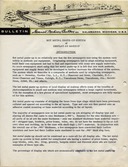
Hammond. Bulletin 1162
"HOT METAL PASTE-UP SYSTEM of DISPLAY AD MAKEUP." (Kalamazoo, MI: Hammond Machinery Builders, 1962). November 1, 1962. "Temporary Instruction Bulletin 1162". Emphasizes the Hammond ThinType Glider saw for use with this sytem. Does not mention the Ludlow Shell-Hi Slug Shear.
The image at left links to a presentation of this document at The Internet Archive. For convenience, here is a local copy of the PDF (64 Megabytes): hammond-temporary-instruction-bulletin-1162-1962-11-01-hot-metal-paste-up-system-0600dpijpg.pdf

Parrish
A form letter from the San Francisco District Sales Office of the Ludlow Typograph Company to James A. Parrish (as an independent Ludlow representative). 1962-11-29. Emphasizes the sale of Elrod molds; does not mention the Ludlow Shell-Hi Slug Shear.
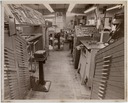
Ogden Standard Examiner
Photographs by Ralph Collins for the Ogden (Utah) Standard Examiner, showing the hot metal composing room of the newspaper with an emphasis upon Ludlow equipment and the hot metal paste-up system.
The image at left links to a presentation of this document at The Internet Archive. For convenience, here is a local copy of the PDF (34 Megabytes): ogden-standard-examiner-hot-metal-department-circa-1962-0600dpijpg.pdf
These photographs show several machines, a few of which may be unfamiliar even to experienced letterpress printers. I'll reproduce them again below, with some annotations. (Note: If you click on the images below, you'll get the original full-resolution scans. These can be quite large images; e.g., photo 1 is about 142 Megabytes in file size and over 12,000 pixels wide.)
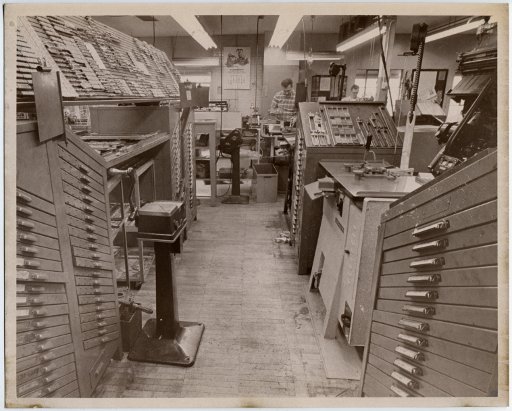
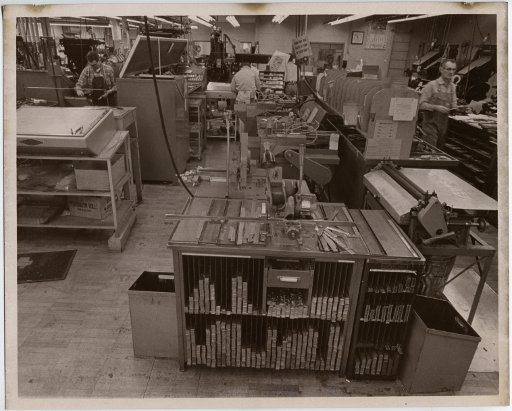
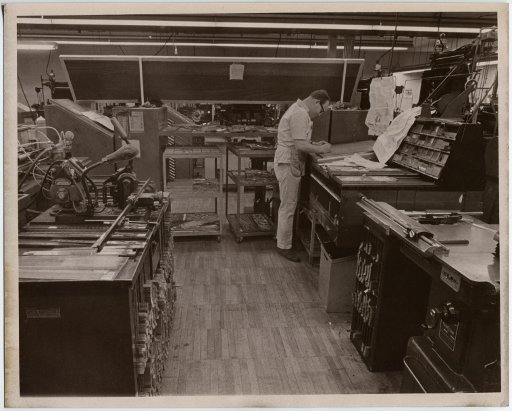

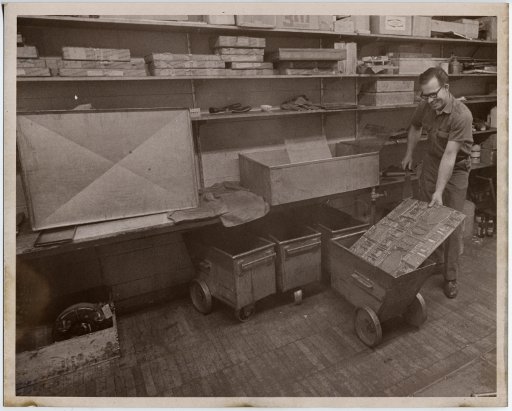

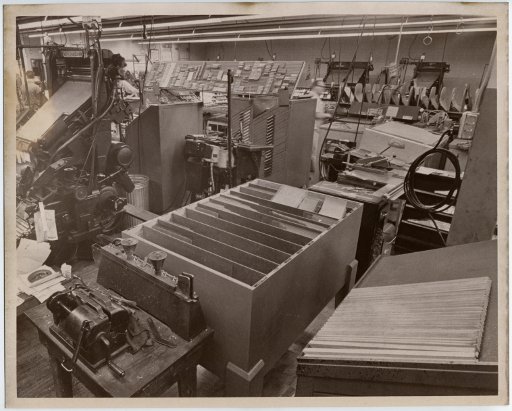
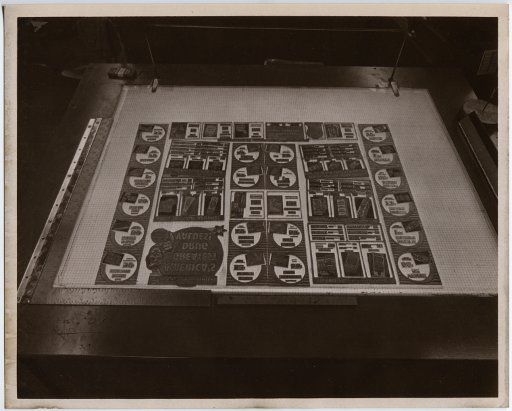
The Hammond Machinery Builders bulletin reprinted here was published in the US without copyright notice at a time when such notice was required to secure copyright. It therefore passed into the public domain upon initial publication. The reprint of it here remains in the public domain.
The letter from Ludlow Typograph to James A. Parrish reprinted here was a form letter distributed by the company; this should constitute "publication." It was published in the US without copyright notice at a time when such notice was required to secure copyright. It therefore passed into the public domain upon initial publication. It is reprinted here with the permission of the literary executor of the late James A. Parrish, Dave Seat of Hot Metal Services (www.hotmetalservices.com) The reprint of it here remains in the public domain.
The photographs by Ralph Collins for the Ogden Standard Examiner were distributed for publication by that newspaper without copyright notice at a time when such notice was required to secure copyright. They therefore passed into the public domain upon initial publication. The reprint of them here remains in the public domain.
All portions of this document not noted otherwise are Copyright © 2011 by David M. MacMillan and Rollande Krandall.
Circuitous Root is a Registered Trademark of David M. MacMillan and Rollande Krandall.
This work is licensed under the Creative Commons "Attribution - ShareAlike" license. See http://creativecommons.org/licenses/by-sa/3.0/ for its terms.
Presented originally by Circuitous Root®
Select Resolution: 0 [other resolutions temporarily disabled due to lack of disk space]